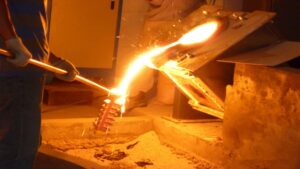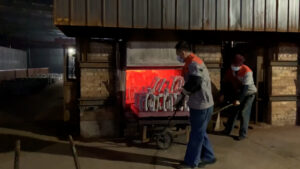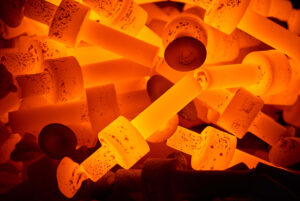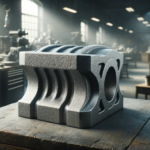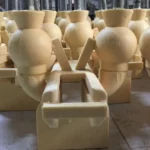Language:
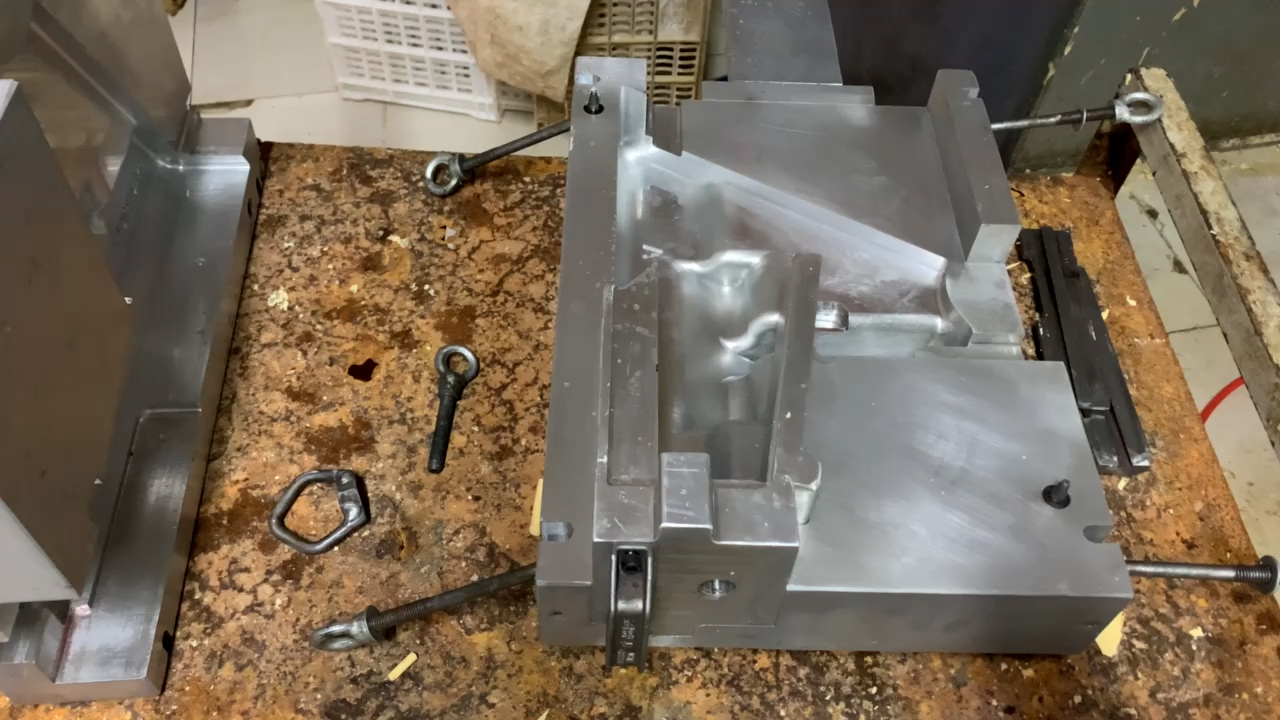
Tooling in Investment Casting: What Is It and Why Does It Matter?
Investment casting, also known as lost wax casting, is a manufacturing process rewoned for its precision and versatility. This centuries-old technique, continually refined through technological advances, plays a crucial role in creating complex and high-quality metal components. Central to the success of investment casting is the art and science of tooling – a critical step that significantly influences the outcome of the casting process.
Tooling in investment casting involves creating detailed moulds and patterns, which are instrumental in shaping the final cast product. The process demands meticulous attention to detail, as the quality of the tool directly impacts the accuracy and integrity of the cast component. This article delves into the various stages of tooling in investment casting, from the initial design to the final testing, offering a comprehensive guide to its processes and techniques.
Tooling Design
The design phase of tooling in investment casting is a critical process where precision and innovation converge. This section explores the meticulous art of tooling design, a stage that lays the foundation for the success of the entire casting operation.
Design Principles: At the core of tooling design in investment casting is the principle of precision. Every tool is crafted to replicate the final product’s exact specifications, considering factors such as dimensions, tolerances, and surface finish. The design must also account for the casting process’s peculiarities, including the flow of molten metal and the need for vents and risers to ensure quality casting.
Software and Modelling Techniques: The advent of advanced software and 3D modelling techniques has revolutionised tooling design. CAD (Computer-Aided Design) and CAE (Computer-Aided Engineering) tools are extensively used to create accurate and detailed representations of the tools. These technologies allow designers to visualise and refine the tooling design before any physical model is made, thereby reducing errors and enhancing the efficiency of the process.
Addressing Design Challenges: One of the significant challenges in tooling design is accommodating the shrinkage that occurs when the metal cools and solidifies. Designers must predict and compensate for this shrinkage to ensure the final product meets the desired dimensions. Another challenge is designing tools that can be easily removed from the final cast without damaging it, which requires thoughtful planning of the parting lines and draft angles.
The tooling design stage is a blend of technical expertise, creative problem-solving, and meticulous planning. It is a critical process that determines not only the feasibility of the casting but also the efficiency and cost-effectiveness of the entire operation. A well-designed tool sets the stage for a successful investment casting process, reflecting the skill and ingenuity of the designers and engineers involved.
Tooling Creation
Following the design phase, the creation of tooling is a critical step where designs are transformed into tangible moulds and patterns.
Materials: The choice of materials for creating tooling is important. Typically, it is made from durable materials such as steel or aluminium, which can withstand repeated use and the thermal stresses of the casting process. The material selection is influenced by factors such as the number of parts to be produced, the complexity of the design, and the type of metal being cast.
Manufacturing the Tooling: The manufacturing process begins with the creation of a master pattern, often crafted using precision machining or, increasingly, 3D printing. This pattern is then used to form the moulds into which the casting material will be poured. Attention to detail is crucial in this phase, as any imperfections will be replicated in every cast part. The tools must be crafted with high precision to ensure that they accurately reflect the design specifications and can produce consistent, high-quality castings.
Precision and Accuracy: Achieving high levels of precision and accuracy is vital in the tooling creation process. This precision directly impacts the quality of the investment casting, as the tooling determines the dimensions, surface finish, and overall integrity of the final product. The use of advanced machining techniques and quality control measures is essential to meet the stringent standards required in investment casting.

Tooling Testing
Once the tooling has been created, it enters a phase of validation and refinement – the testing stage.
Testing Procedures: The testing stage is a process designed to verify the accuracy and functionality of the moulds and patterns. This typically involves a series of inspections and trial runs to detect any potential defects or discrepancies. Dimensional accuracy is checked using precision measurement tools, ensuring that the tooling conforms to the specified design tolerances.
Quality Assurance: Quality assurance is integral to tooling testing. Each tool is scrutinised for surface quality, structural integrity, and alignment. This scrutiny is crucial as any imperfections can lead to flaws in the final cast product. Advanced testing methods, such as 3D scanning and non-destructive testing techniques, are often employed to provide a comprehensive assessment of the tool’s quality.
Adjustments and Revisions Based on Feedback: An essential aspect of tooling testing is the ability to make adjustments based on the feedback gathered. If issues are identified during testing, modifications may be required. This iterative process is vital to refining the tool to a point where it consistently produces castings that meet all required specifications.
Factors to Consider
Cost and Time Efficiency: Balancing cost-effectiveness with time efficiency is a crucial consideration. The initial investment in tooling can be significant, especially for intricate or large designs. However, the longevity and reusability of the tools often offset this initial cost. Efficient tool design and manufacturing processes are essential to minimise both the lead time and costs involved. This efficiency not only impacts the overall cost of the casting process but also influences the time-to-market for the final product, a crucial factor in today’s fast-paced market environments.
Complexity and Size Limitations: Another vital factor to consider is the inherent limitations regarding the complexity and size of the parts that can be effectively produced through investment casting. While the process is renowned for its ability to produce detailed and complex shapes, there are practical limits to the level of complexity and the size of the castings that can be achieved. These limitations are often dictated by the capabilities of the tooling materials and the casting equipment. Understanding these constraints is essential for realistic and practical design, ensuring that the final product can be produced without compromising on quality or design intent.
Addressing these factors is fundamental to the success of tooling in investment casting. A careful evaluation of cost and time implications, along with a thorough understanding of the limitations imposed by complexity and size, enables manufacturers to optimise their tooling strategies. This optimisation is key to achieving high-quality castings in a cost-effective and timely manner, aligning with the overarching goals of efficiency and performance in manufacturing.
Conclusion
As we conclude our comprehensive exploration of tooling in investment casting, it becomes evident that this process is a nuanced aspect of manufacturing, requiring attention to detail and expertise. The success of investment casting heavily relies on the precision and quality of the tooling, which in turn depends on the thoughtful consideration of various factors, including cost, time efficiency, and the complexities involved in design and size.
In the forefront of advancing these precise tooling methodologies is Taiyuan Simis Investment Casting Co., Ltd. With a team of experienced engineers, Simis exemplifies the pinnacle of tooling design and creation in the investment casting. Our approach is tailored to the specific requirements of each project, ensuring that every tool is optimised for the desired outcome. This bespoke method of tooling design and creation not only underscores Simis’s commitment to quality but also their adaptability to meet diverse and complex needs.
In summary, the art of tooling in investment casting is one that demands both technical skill and creative problem-solving. Manufacturers like Taiyuan Simis Investment Casting Co., Ltd, with their experienced team and client-centric approach, continue to set the standard in this specialised area. Their dedication to crafting precise and efficient tooling solutions reflects the importance of this process in the broader context of manufacturing and industrial innovation.
